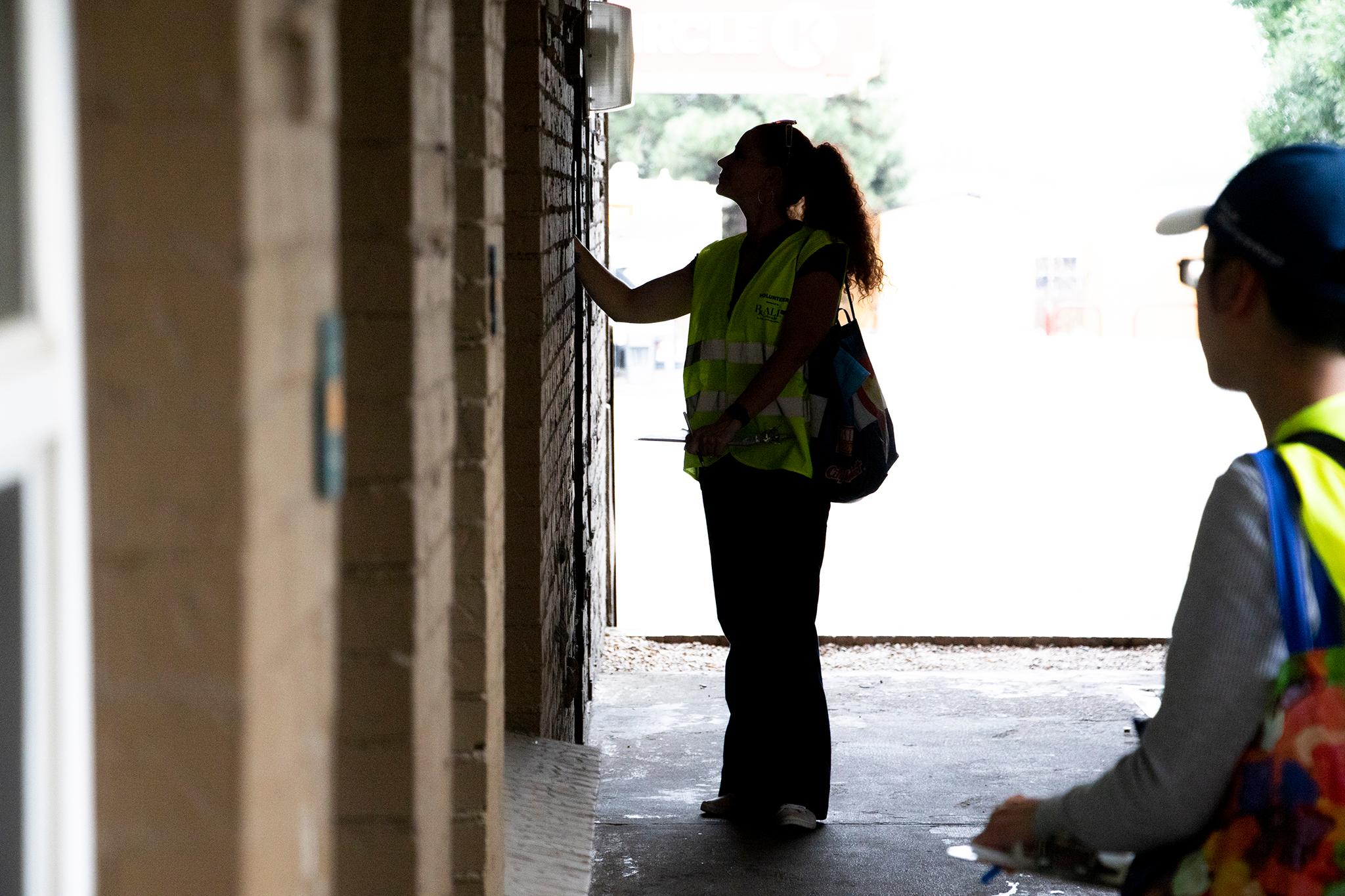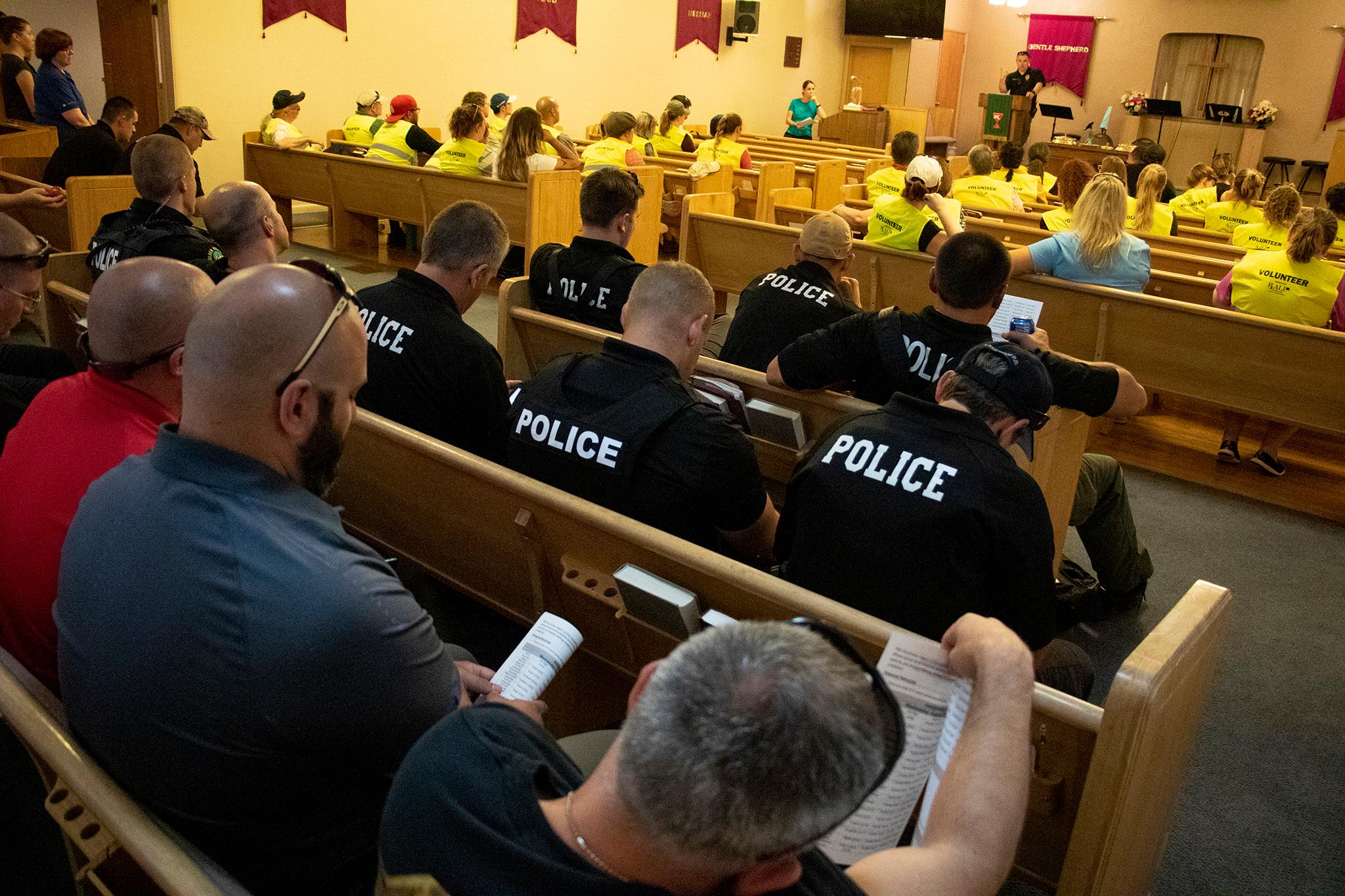A month-long count that showed homelessness is much more prevalent than previous one-day surveys had indicated makes clear that Jefferson County needs to do more to combat a regional problem, according to people fighting poverty.
The 997 people counted last summer living on the streets, in shelters or in transitional or unstable housing in Jefferson County's first such comprehensive count was more than double the 434 people found unhoused in the county during the more typical one-day count in January known as the Point in Time. In all, 668 of those 997 experiencing homelessness or housing insecurity in Jeffco in August met a narrower definition of homelessness used for the Point in Time. And 516 of the 997 were unsheltered -- compared with just 124 counted on the streets, in their cars, RVs or other places not suitable for permanent habitation during the Point in Time.
"The numbers really told the story that we are experiencing," said Pam Brier, executive director of the Action Center, a Lakewood-based nonprofit that provides food, clothing, help with rent and utilities and other services in Jefferson County.
Brier added that the results of the comprehensive count underscored that "need out there is growing and is tremendous and that there are disparities in our community."
In 2018, Brier closed her center's 22-bed shelter because of a lack of funding. Earlier this year, the Action Center facility reopened in partnership with Red Rocks Community College to house six to 12 students experiencing homelessness or housing insecurity.
A network of Jefferson County churches provides emergency shelter when the weather is severe and organizations offer shelter to families, but no permanent shelter is available for the general population experiencing homelessness.
"Jefferson County needs a shelter," Brier said. "Jefferson County needs a whole continuum of services. It needs a whole network of support."
The surveyors last summer also asked people experiencing homelessness about needs they would like to see addressed and what needs were being met. Two-thirds of the households that responded listed housing assistance as a top need; 5 percent said they had received help finding housing.
"The report really clarifies that Jefferson County has a significant population of folks experiencing homelessness, and we need to figure out what services meet their needs," said Matt Meyer, executive director of the Metro Denver Homeless Initiative.
Meyer's nonprofit oversees the Point in Time for an eight-community region that includes Jefferson and Denver counties. The total metro Denver count for 2019 was 5,755 people experiencing homelessness, most of those in the city and county of Denver, where the count was 3,943. Services such as shelters are concentrated in Denver and to some extent in Boulder, Meyer said, adding it would be more efficient to have services more spread out.
The Jefferson County surveyors last summer also found 118 adults, or 15 percent of all the adults questioned, who said they were fleeing domestic violence. Last year's Point in Time counted 33 households that reported fleeing domestic violence. Scott Shields, chief executive officer of Family Tree, a non-profit based in Wheat Ridge that provides housing and other services in Jefferson County, said his organization had recently submitted applications for federal funding to expand services for people fleeing domestic violence.
"This report just supports this new direction for us," Shields said.
"Shocking is the word that keeps coming to mind," Shields added in reaction to the results of the comprehensive count.
Diane Howald of the Metro Denver Homelessness Initiative is in charge of the Point in Time and helped support the Jefferson County count. She lauded Jefferson County for wanting "to put in more effort to learn more about how to help people."
Jefferson County's size and varied geography make it hard to pin down people experiencing homelessness in a one-day count like the Point in Time.
Jefferson County regularly participates in the Point in Time, which the federal government uses to make decisions about funding housing programs. Jefferson County wanted more data and more reliable numbers, so the comprehensive count was organized.
The Point in Time, held across the country over a 24-hour period in January, yields a snap shot that can be tracked year-to-year and compared from community to community across the United States. Efforts like the comprehensive count require more resources than some places are able to muster, and even those that do aren't likely to repeat the exercise annually.
For its first comprehensive count, Jefferson County deployed volunteers who spent five days in mid-August knocking on doors at cheap motels, hiking along mountain paths, and looking elsewhere for people experiencing homelessness or housing insecurity. In addition to surveys collected in the field, hospitals, schools and service providers put the same survey questions to people throughout August. Analysts later combed through the surveys to ensure no one was counted twice in the results, released March 5.
For the August count, the term homelessness encompassed people living in an emergency shelter, transitional housing, those who were unsheltered, and those who lacked stable housing. People lacked unstable housing if, on the day they were surveyed, they were unable to sleep or stay in the same place for the next 14 days, were unable to pay for housing for the next 14 days, or had had inconsistent housing for the last 60 days.
Questions about housing instability are not part of the Point in Time. Jefferson County officials wanted an idea of housing instability to be better prepared for people who might have found a place on the couch of a friend or relative or a motel room in the short term, but could easily end up without a permanent home.
Schools use the broader definition that captures housing insecurity for separate counts they compile over the course of the school year, in part to secure funding from the federal education department to support low-income students. Jefferson County schools reported more than 3,000 students experiencing homelessness or housing insecurity during the 2017-'18 school year, more than Denver's 1,762.
"All data is really instrumental in forging an overarching picture," said Jamie Rife, who once coordinated programs for homeless students at the Colorado Department of Education.
But Rife, who is now director of communications and development for the Metro Denver Homelessness Initiative, said different definitions, longer or shorter counting periods and even the weather can affect counts and make it hard to compare one set of numbers to another.
"The needs are so much greater than we are ever going to be able to 100 percent identify," said Cassie Ratliff, who directs Family Tree's homelessness programs, saying multiple assessments were useful.
"One tool is not going to give us the answer."

"The (Jefferson County comprehensive count) report's findings will be used to guide policy-making and service decisions and identify funding opportunities in order to better serve those who are homeless as well as improve the quality of life for all residents," a steering committee for the effort said in a letter accompanying the release of the report.
"While we fully expect that the survey results will lead to more questions, they must also lead to action. It is our intent that the information in this report is used to create policies, programs and partnerships designed to ensure that homelessness of any sort is rare and short-lived when it does occur," added the letter from the seven member committee.













